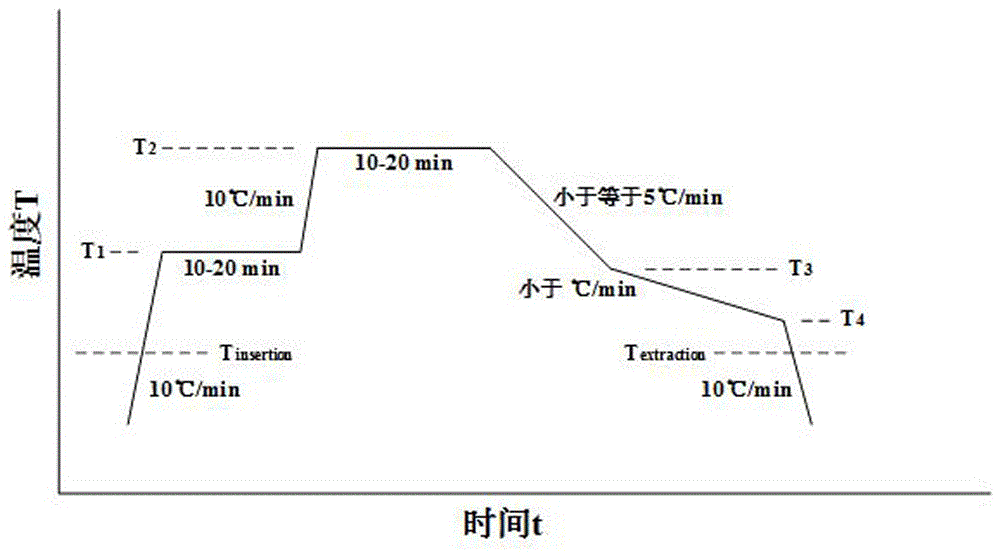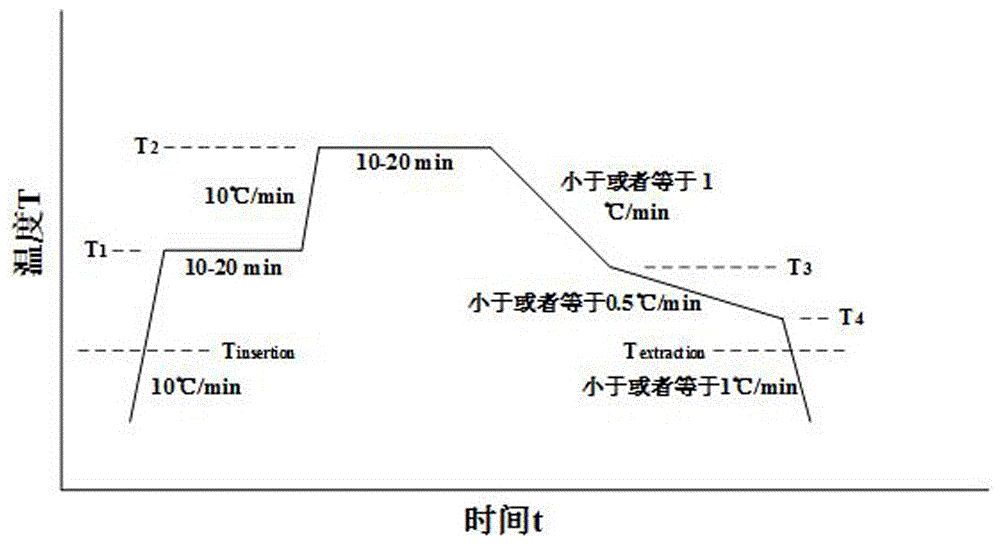Passivation method of semiconductor device and semiconductor device
A semiconductor and device technology, applied in the field of semiconductor devices, can solve problems such as catastrophic failure and electrical characteristic degradation
- Summary
- Abstract
- Description
- Claims
- Application Information
AI Technical Summary
Problems solved by technology
Method used
Image
Examples
Embodiment Construction
[0019] figure 1 It is the temperature-time curve diagram of typical glass passivation layer formation in the prior art, for example: the patent CN1183582C of the People's Republic of China on January 5, 2005, for a specific glass component, the DTA melting curve of glass. It can be seen that from the temperature T after the melting (glass forming) step 2 To the starting point temperature T of the annealing step 3 , the cooling rate (temperature-time gradient) is 5°C / min, the cooling rate of the annealing step is 2˚C / min, followed by the end point temperature T of the annealing step 4 To the end point temperature T of the annealing step 4 Below 25°C, the cooling rate is converted to about 10°C / min.
[0020] Regarding the formation of lead oxide silicate passivated glass, the specific implementation of this proposal is as follows: In the glass melting step (in an atmosphere of nitrogen or nitrogen and oxygen at 820˚C, 15-30 minutes) T 2 The subsequent cooling rate is 1°C / min...
PUM
 Login to View More
Login to View More Abstract
Description
Claims
Application Information
 Login to View More
Login to View More - R&D
- Intellectual Property
- Life Sciences
- Materials
- Tech Scout
- Unparalleled Data Quality
- Higher Quality Content
- 60% Fewer Hallucinations
Browse by: Latest US Patents, China's latest patents, Technical Efficacy Thesaurus, Application Domain, Technology Topic, Popular Technical Reports.
© 2025 PatSnap. All rights reserved.Legal|Privacy policy|Modern Slavery Act Transparency Statement|Sitemap|About US| Contact US: help@patsnap.com


